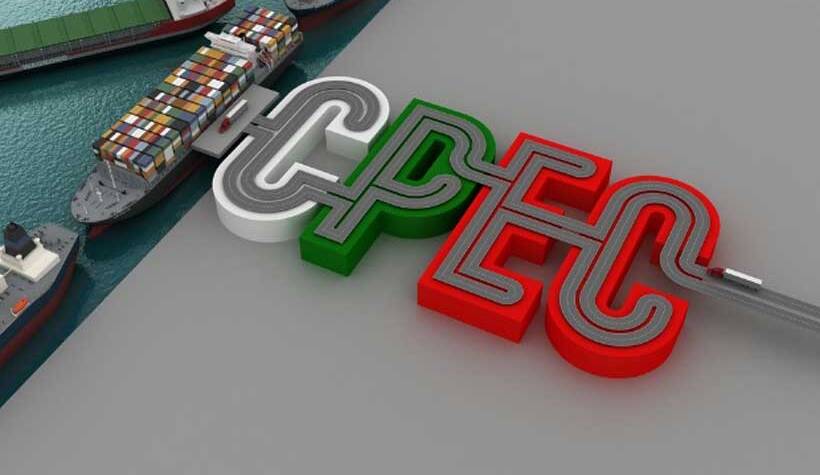Beyond mere infrastructure projects, CPEC II embodies a bold vision for Pakistan’s future, one that transcends conventional boundaries and embraces innovative approaches to growth.
Syed Ali Nawaz Gilani.
Pakistan stands at the threshold of a promising future, poised to unlock new avenues of growth and opportunity through the adoption of diversified development strategies and strengthened cooperation with China. This collaborative approach not only heralds a brighter tomorrow but also underscores the resilience and potential of the bilateral partnership between the two nations.
China Pakistan Economic Corridor (CPEC) embarks on a new phase with “CPEC II”, aiming to build upon the achievements and lessons learned from its predecessor. Version two seeks to deepen economic cooperation and bilateral relations between the two nations while addressing emerging priorities and seizing new opportunities. Marking a strategic shift, CPEC II focuses on diversified development initiatives, highlighting fresh areas of collaboration such as agriculture, industrial cooperation, technology transfer, tourism, and social development projects. This ambitious agenda aims to expand the scope of economic engagement between China and Pakistan, fostering sustainable growth and mutual prosperity. At the heart of CPEC II lies the implementation of additional infrastructure projects, encompassing highways, railways, ports, and airports. These endeavors are crafted to enhance connectivity within Pakistan and with China, promising to boost trade, streamline transportation of The timeline of CPEC and its subsequent evolution into CPEC II presents a captivating narrative of collaboration and progress between China and Pakistan.
In 2013, the China-Pakistan Economic Corridor (CPEC) was officially inaugurated during Chinese President Xi Jinping’s historic visit to Pakistan. This inaugural phase prioritized infrastructure development, laying the groundwork for ambitious projects spanning roads, railways, and energy initiatives. By 2015, the initial phase of CPEC had gained substantial momentum, witnessing the completion of several infrastructure endeavors aimed at bolstering connectivity between China’s western region and Pakistan’s Gwadar Port. As the corridor gained traction, 2017 marked a pivotal moment with the initiation of a diverse array of projects covering sectors such as energy, transportation, telecommunications, and industrial cooperation. CPEC began to attract international attention as a linchpin of China’s ambitious Belt and Road Initiative. 2017 also saw discussions emerge regarding the expansion and diversification of CPEC’s scope, leading to the conceptualization of CPEC II. This transformative phase aimed to build upon the successes of its predecessor while exploring new avenues of cooperation, including agriculture, technology transfer, and social development.
Formal agreements signed between China and Pakistan in 2021 heralded the commencement of CPEC II, marking a significant milestone in their economic partnership. The focus shifted towards comprehensive and inclusive development strategies, emphasizing sustainable growth and mutual prosperity.
Implementation of CPEC II began in earnest in 2022, marked by the launch of additional infrastructure projects spanning highways, railways, ports, and airports. Simultaneously, efforts were made to foster people-to-people exchanges, cultural cooperation, and educational collaboration between the two nations.
As CPEC II gained momentum in 2023, new initiatives took shape, deepening economic cooperation and bilateral ties between China and Pakistan. The corridor emerged as a cornerstone of regional development and connectivity, underscoring its transformative potential.
In 2024, as CPEC II continued to progress, Pakistan and China reaffirmed their commitment to enhancing collaboration and addressing emerging priorities and opportunities. The corridor remained a symbol of resilience, innovation, and shared prosperity, signaling a promising future for both nations.
CPEC II holds promise for Pakistan’s economic future, but it also faces challenges including geopolitical tensions and security threats which could disrupt its progress. Ensuring safety for infrastructure and personnel is crucial. Economic stability is another concern due to global market volatility. Local opposition over land and environmental issues needs addressing. Debt sustainability is a worry, requiring careful financial management. Environmental impacts of large-scale projects must be managed responsibly. Political instability could also hinder the project’s continuity. Collaboration and proactive measures are needed to overcome these obstacles. Only with careful planning can CPEC II fulfill its potential for Pakistan’s prosperity. The transformation from CPEC to CPEC II reflects the dynamic evolution of the economic partnership between China and Pakistan, underscoring their mutual dedication to fostering development and prosperity.
CPEC II envisions the expansion of energy projects to meet Pakistan’s power generation needs, with a focus on sustainable solutions. By tapping into renewable energy sources and modernizing existing infrastructure, CPEC II endeavors to promote environmental responsibility and resilience in the face of evolving energy demands. In addition to physical infrastructure, CPEC II emphasizes the significance of people-to-people exchanges, cultural cooperation, and educational collaboration. These initiatives are geared towards strengthening social bonds, deepening mutual understanding, and nurturing enduring friendships between the peoples of China and Pakistan.
In a world fraught with complex geopolitical dynamics, economic fluctuations, and security challenges, the advent of CPEC II emerges as a significant milestone for Pakistan. It represents a ray of hope, illuminating the path forward amidst the uncertainty and turmoil.
CPEC II symbolizes not just the continuation, but the evolution of the China-Pakistan Economic Corridor, promising new opportunities and avenues for growth. As Pakistan navigates through the intricacies of global politics and economic shifts, CPEC II offers a sense of direction and stability.
Moreover, CPEC II serves as a catalyst for optimism, instilling confidence in Pakistan’s economic future and fostering a sense of resilience in the face of adversity. It signifies a commitment to cooperation and collaboration, not only between China and Pakistan but also within the broader global community.
As Pakistan embraces the possibilities presented by CPEC II, it embarks on a journey towards greater prosperity, innovation, and resilience. It is a testament to the country’s determination to overcome challenges and seize opportunities, ultimately paving the way for a brighter and more promising future.
CPEC II is not merely a continuation of infrastructure endeavors; it signifies a seismic shift towards holistic and inclusive development strategies. With its multifaceted approach, Pakistan stands on the cusp of unlocking the latent potential of diversified economic initiatives, utilizing its strategic alliance with China to unlock fresh vistas of growth and prosperity.
















